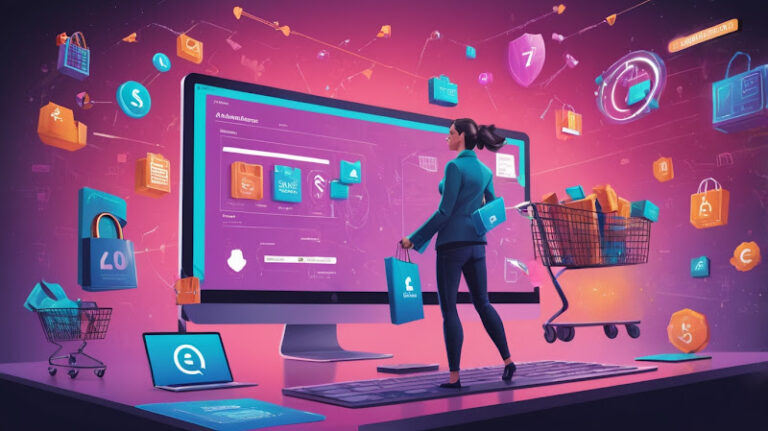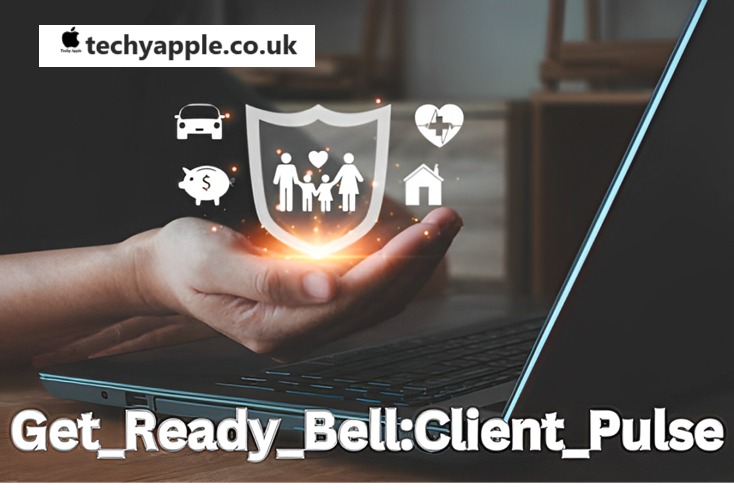7 Steps To Create a Brilliant Customer Experience For Your SaaS Business
The success of a SaaS company depends on attracting and retaining customers.
Furthermore, although having a fantastic product can draw in clients, providing them with an excellent experience will win them over.
You must help your clients at every stage of their journey if you want to deliver an outstanding SaaS customer experience. Aspects of SaaS companies’ customer experiences (CX) will be examined in this article, including the journey, touchpoints, interactions, and engagements that are significant to and for your clients.
To improve client satisfaction and spur commercial expansion for your SaaS firm, adhere to this seven-step method.
What is SaaS Customer Experience?
SaaS CX refers to your clients’ overall impression of their interactions with your business. Every encounter a customer has with your staff, brand, messaging, and product via all of your channels and devices is part of the SaaS customer experience. In essence, it’s anything that has an impact on how your customers view your brand.
A positive SaaS customer experience adds value to consumers by guiding them through the purchasing process, educating them, and motivating them to stay with you. The ability of customers to understand this value is critical to success.
Why is customer experience important to SaaS companies?
SaaS firms who have good CX can:
- Create a benefit over the competition
- Maximize their ability to generate income, reduce customer acquisition costs (CACs), and encourage renewals.
- Make wise choices while developing new products.
A mobile app development company ability to succeed entirely depends on its ability to satisfy its customers. Customer experience (CX) is what keeps customers coming back. When they do, you may increase revenue, retention, and lower churn.
An focus with the customer experience has helped some of the top SaaS firms in the world—Slack and Zendesk are two excellent examples of SaaS experiences—achieve long-term success.
Seven steps to building and refining a SaaS customer experience
Achieving a balance between consumer and company needs is key to improving SaaS customer experience.
Are you curious about how? To perfect the user experience for your SaaS, adhere to these seven steps:
1. Find out how people interact with your product–
Why it matters:
Your product is your main source of income in the SaaS industry. Furthermore, a great user experience is contingent upon your ability to comprehend user behavior inside your product, including the motivations behind users’ behaviors.
Free trials and freemium models are examples of product-led growth methods that may help you get started in engaging prospects.
Additionally, technologies like Session Replays allow you to see how consumers explore, browse, and use your product early on.
Offering potential customers the opportunity to register and test your product for free enhances customer experiences and gives product teams access to pertinent behavioral data, which is the catalyst for delivering a customized customer experience that will win over a customer for life and increase lifetime value.
However, businesses that make it difficult for consumers to test their product run the risk of upsetting them with a poor user experience (UX).
Additionally, these businesses miss out on the chance to see how customers use their products. This knowledge gap can impact the CX, business objectives, and product workflow of a SaaS company, hence restricting its potential for development.
2. Organize CX among departments to dismantle silos
Why it matters:
Every interaction a consumer has with your business is included in the customer experience (CX), which means that several stakeholders are involved and that choices are frequently made by a number of different people or departments.
However, distinct departments will probably approach CX with varying objectives, perspectives, and data. Additionally, having too many silos can harm corporate culture, irritate employees, and degrade customer experiences.
The following indicate that your business has grown overly compartmentalized:
- When a customer’s experience with a product or service falls short of what a salesperson or marketing message promised, they may complain.
- Sales teams can wind up attempting to upsell a client on a product they already own. Users might get contradictory information from various customer service team representatives.
- Content created by marketing teams might not be relevant to users’ current demands.
- Product teams may provide features that worsen user experience and increase customer displeasure.
You must consider several user paths, innumerable touchpoints, and user interactions inside your SaaS product to assess and enhance your customer experience.
Who’s participating:
Every team in an organization, including those in finance, engineering, marketing, sales, product, and support, should be involved in the customer experience.
How to optimize it:
Your SaaS business must coordinate several departments on pertinent product objectives and KPIs in order to be successful with this method.
It is recommended that team leaders collaborate to devise a strategy aimed at enhancing information exchange and motivating staff members to embrace collaborative procedures and tools.
For instance, product managers ought to collaborate more closely with customer care representatives and leverage data and machine learning insights to enhance product development. This entails improving upgrade requests, disseminating UX research, and monitoring the advancement of client happiness.
In order to provide customer experiences that move prospects and customers from one stage to the next, leaders must also provide their teams with the information and resources they need.
Although it takes time to become a truly collaborative business, the work pays off in higher customer satisfaction, happier employees, and increased productivity.
Expert advice: provide your staff with resources and a consistent voice in addition to training them to comprehend your customers.
Every stage must be approached with the client in mind. Rather than scanning the scene to see what’s trending, focus on understanding your consumers’ requirements and setting your own trends. In this manner, you can easily distribute the experience across several platforms and provide the impression that the consumer is speaking with a single, powerful brand.
Here are some strategies your team may take to comprehend and feel the same way as your users:
- Do one-on-one interviews with users. Using the DianApps allows you to lead in the business front successfully.
- Examine UX reports and site survey findings.
- Give watching user screen records some thought.
- Keep abreast with client feedback.
3. Establish a successful onboarding procedure
Why this matters:
SaaS businesses that are aware of consumer expectations and experience are switching to a new method of acquiring new clients.
Reducing the amount of time and friction required for a customer to test the product is the aim. Implementing a successful onboarding process is the way to go about it. During this phase, new clients learn how to use a new product, ask questions, and get their initial worries answered.
Developing a customized onboarding strategy is essential to fostering enduring connections with your users. It may be harmful to your development if a user has a bad onboarding experience and becomes confused or upset since it sets the tone for future purchases or interactions with your business.
Who is involved:
Creating a solid onboarding strategy is the first step in developing long-term connections with your clients. That should be the result of cooperation between the product team, which handles operations and administration, and the customer success team, which handles user data.
How to maximize it:
Welcoming new users might be challenging, but it’s an engineering process, not magic. The most prosperous SaaS experience cases, such as Trello and HubSpot, have procedures in place that expedite onboarding and shorten the duration between a potential customer’s arrival on the website and when they begin using the product.
It is possible (and recommended) to deploy, optimize, and test your way toward the perfect product experience to build an excellent onboarding experience for your clients.
Gather input on your onboarding procedure using surveys, and then use the survey results to improve it.
Some Valuable Tips:
- Eliminate any extraneous data or processes from your signup process.
- Avoid displaying more features to consumers than they require in order to activate
- Create interactive, contextual walkthroughs rather than just straight-line product tours.
- Provide various user personas with unique experiences.
Make it easy. The consumer won’t learn everything from you throughout the onboarding process. Rather, give your clients the freedom to independently get more information.
For instance, having a customer-facing knowledge base or help center where customers can quickly get the tutorials, FAQs, and training resources they need to be successful with your product or service might be beneficial.
Verify that the data you are providing is:
Thorough so consumers may easily get all the information they want
Easily accessible from any location at any time to ensure that clients receive your product or service swiftly, effectively, and painlessly
Pro tip:
How recently have you gone through the onboarding process yourself?
One of the greatest methods to identify and address problems or gaps in your customer experience is to become your own customer. As they say, eat your own dog food.
Experiencing your own onboarding allows you to put yourself in your client’s position and identify areas for future development.
4. Minimize friction and generate client satisfaction
Why it matters:
Users currently enjoy a genuinely contemporary experience thanks to the innovative SaaS business model. However, facilitating a seamless end-to-end experience is the key to satisfying clients and ensuring their return business.
Businesses that offer a seamless user experience get the benefits of increased loyalty, lower customer support expenses, increased conversion and retention rates, and a lower SaaS churn rate.
By making things amazingly simple, quick, and fun to use, you may reduce user effort while simultaneously building a sense of goodwill and connection between your brand and your customers.
Who’s Involved;
Cross-functional product and support teams, as well as a customer-led strategy for obtaining and using feedback, are necessary to reduce customer effort.
While staying flexible, think about the talent you need to interact with. Product managers, developers, QA specialists, and representatives from the customer success and support departments might all be involved in this, collaborating to find places of friction and comprehend user behavior and the reasons behind it.
How to maximize it:
Ease the customer’s business dealings by minimizing their work at every stage of the process:
Compile and evaluate consumer behavior and feedback:
Knowing your consumers and enhancing the user experience are excellent places to start if you want to lower friction. Here’s where behavior analytics and product experience insights tools come into play for a SaaS product. These tools, such as Session Replays, Heatmaps, and Voice of Customer, can help you uncover user preferences, pain points, and points of friction in the customer experience.
Redesign and enhance their product in response to consumer feedback:
Now that you have the information required to optimize your offering, it’s time to go to work on issues and giving your clients the greatest customer experience. Provide what your consumers truly need and desire from your product, and take note of the areas that customers themselves have identified as needing improvement.
Make it simple for clients to self-serve:
Self-service enables potential buyers to assess a product in a similar manner to how content marketing enables them to educate themselves. In addition to spending time refining key touchpoints and offering prompt, amiable customer support, let consumers self-serve when it suits them. Make sure clients have access to what they require at the appropriate time.
Ensure that your website is easy to use.
After all, it serves as the initial point of contact between visitors and your SaaS business. It may affect their opinion of the SaaS customer experience if they have trouble using it or must get in touch with you frequently to have a problem fixed (for instance, they may need to phone after attempting to address a problem on the website without success).
These components are essential to your SaaS business and, by extension, your clientele’s experience. You’ll be well on your way to improving the client experience by optimizing the factors that cause these kinds of obstacles.
5. Inform your consumers about your SaaS product.
Why it matters:
Every SaaS firm should be offering free educational resources to enhance the customer experience since this adds value for them.
Giving consumers the tools they need to succeed can help them remember your brand and become more devoted to it.
Who’s involved:
To improve the accessibility of product-related and educational information for both current and potential consumers, product and customer success teams should work together. Various consumer wants may also be clarified with the use of marketing and sales input.
How to optimize it:
Follow these steps to ensure that the time you invest in producing content benefits both your personal goals and the experience of your customers:
- Remain pertinent: Determine your clients’ pain areas and what they need to use your product successfully.
- Give your consumers’ opinions a voice and consider them: provide material that explains your solutions to them in detail.
- Establish a self-service site for customers: Give your clients access to a knowledge base or learning portal so they can learn more about your product, locate troubleshooting manuals, and find out information about it anytime they need it.
Your pass to an improved SaaS user experience
You may deliver the most luxurious SaaS customer experience across the whole lifecycle with an effective CX strategy and the appropriate CX tools, which will lead to happy and secure customers (which eventually leads to strong, long-term partnerships).
A great customer experience is based on your company’s principles and refined by what your clients desire. It provides you with a competitive advantage that you may keep for the duration of your company because it is difficult for rivals to imitate.
Hire DianApps, a top custom software development company to improve your SaaS product and customer experience today!






